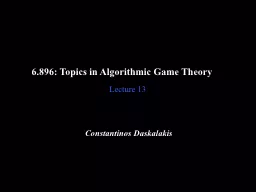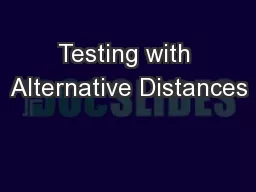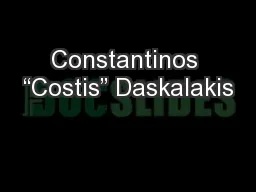PPT-Constantinos Daskalakis
Author : conchita-marotz | Published Date : 2017-09-10
CSAIL and EECS MIT Greek Stochastics Statistics vs Big Data YOU WANT BIG DATA ILL GIVE YOU BIG DATA Human genome 40 exabytes storage by 2025 SKA Telescope
Presentation Embed Code
Download Presentation
Download Presentation The PPT/PDF document "Constantinos Daskalakis" is the property of its rightful owner. Permission is granted to download and print the materials on this website for personal, non-commercial use only, and to display it on your personal computer provided you do not modify the materials and that you retain all copyright notices contained in the materials. By downloading content from our website, you accept the terms of this agreement.
Constantinos Daskalakis: Transcript
Download Rules Of Document
"Constantinos Daskalakis"The content belongs to its owner. You may download and print it for personal use, without modification, and keep all copyright notices. By downloading, you agree to these terms.
Related Documents




